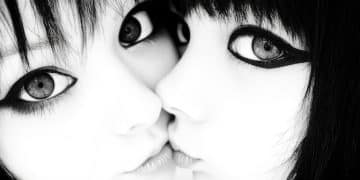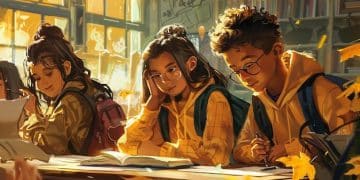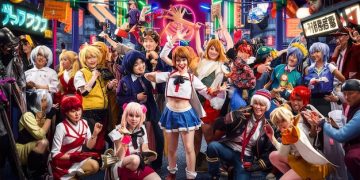Shonen Manga Adaptations: Finding Anime That Stay True to the Source

Shonen manga adaptations vary widely in their faithfulness to the source material, with some anime series closely following the manga’s plot and character development, while others take significant liberties that alter the original story.
The world of anime is filled with adaptations of popular shonen manga, but how closely do these anime series really stick to their source material? Discover which adaptations remain faithful and which ones venture off on their own paths.
Understanding Shonen Manga Adaptations
Shonen manga adaptations are a cornerstone of the anime industry, bringing beloved stories to life on screen. These adaptations can range from faithful recreations to entirely new interpretations, each with its own merits and drawbacks.
Understanding what makes an adaptation “true” to the source material involves looking at several factors, from plot fidelity to character consistency, and even the overall tone and themes of the original manga.
Key Elements of Faithful Adaptations
A faithful adaptation isn’t just about copying the plot. It’s about capturing the essence of the original work. Here are some key elements to consider:
- Plot Integrity: Does the anime follow the main storyline of the manga, or does it introduce significant diversions?
- Character Consistency: Are the characters portrayed in a way that aligns with their manga counterparts in terms of personality, motivations, and development?
- Art Style and Tone: Does the anime capture the visual style and the overall mood of the manga, whether it’s lighthearted and comedic or dark and serious?
- Pacing and Structure: Does the anime adapt the manga’s pacing effectively, avoiding unnecessary filler or rushing through important plot points?
Ultimately, the success of a shonen manga adaptation lies in its ability to balance faithfulness to the source material with the unique possibilities offered by the anime medium.
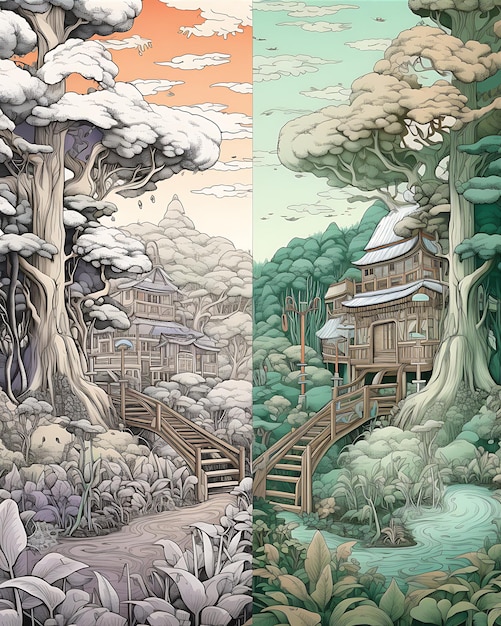
High Fidelity Adaptations in Shonen Anime
Some anime adaptations are known for their close adherence to the source material. These series often win praise from manga fans who appreciate seeing their favorite stories brought to life with minimal changes.
These adaptations often prioritize staying true to the original author’s vision, resulting in a viewing experience that closely mirrors the manga reading experience.
Case Study: “Fullmetal Alchemist: Brotherhood”
“Fullmetal Alchemist: Brotherhood” is widely regarded as one of the most faithful shonen manga adaptations. After the first anime series diverged significantly from the manga’s ending, “Brotherhood” was created to follow the original plot more closely.
The anime faithfully adapts the manga’s story, character arcs, and even its intricate world-building. This adherence has made it a beloved adaptation among fans, who appreciate its commitment to Hiromu Arakawa’s original vision.
Another Example: “Hunter x Hunter” (2011)
The 2011 adaptation of “Hunter x Hunter” is another example of a high-fidelity adaptation. This series covers a large portion of Yoshihiro Togashi’s manga, sticking closely to the plot and character designs.
The anime’s success lies in its ability to capture the essence of the manga while enhancing it with animation and sound. This adaptation has earned praise for its faithfulness and high production quality.
Anime Adaptations with Divergent Storylines
Not all shonen anime adaptations remain faithful to their source material. Some series diverge significantly, introducing new plotlines, characters, or even altering the ending entirely.
While these changes can sometimes be controversial, they can also offer a fresh perspective on the original story, attracting new fans and surprising longtime readers.
Creative Choices: “Soul Eater”
“Soul Eater” is an example of an anime that diverged from the manga’s storyline. While the early episodes followed the manga closely, the anime eventually developed its own unique ending.
- Original Ending: The anime’s ending differed significantly from the manga, which was still ongoing at the time of the anime’s production.
- Character Development: Some characters experienced different arcs and outcomes compared to their manga counterparts.
- Mixed Reception: The anime’s changes received mixed reviews, with some fans appreciating the fresh take and others preferring the manga’s original direction.
The decision to deviate from the manga allowed the anime to provide a conclusion even though the manga was still in progress. This approach, however, can be divisive among fans.
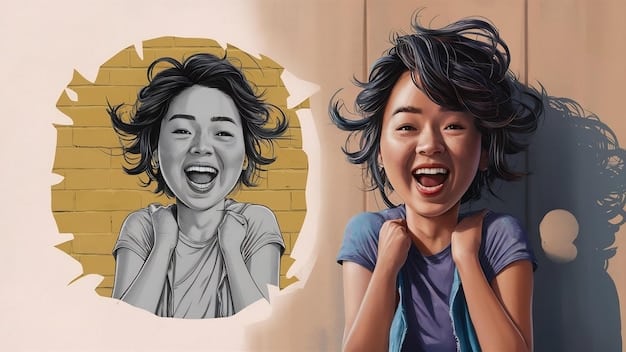
Reasons for Divergence in Adaptations
There are several reasons why an anime adaptation might diverge from its source material. These can include production constraints, creative decisions, or the desire to appeal to a broader audience.
Understanding these reasons can provide insight into why some adaptations choose to stray from the path laid out by the original manga.
Catching Up with the Manga
One common reason for divergence is that the anime production catches up with the manga’s release. When this happens, the anime may need to create original content to fill the gap or provide a conclusion before the manga has finished.
This situation often leads to anime-original storylines and endings, which can be a point of contention for fans who prefer a faithful adaptation.
Creative Interpretation
Sometimes, divergence is a deliberate creative choice. The anime’s creators may want to put their own spin on the story, exploring different themes or character dynamics.
- Artistic Vision: The anime’s director and writers may have a unique vision for the story that differs from the manga author’s.
- Expanding the World: The anime may introduce new elements or expand on existing ones to create a richer, more immersive experience.
- Target Audience: The anime may be tailored to appeal to a specific demographic, which may necessitate changes to the original story.
Ultimately, the decision to diverge from the manga reflects the creative team’s desire to make the anime their own.
Impact of Adaptation Choices on Fan Reception
The choices made during an anime adaptation can have a significant impact on how fans receive the series. Faithful adaptations often earn praise for honoring the source material, while divergent adaptations can be more divisive.
Fan reception can be a critical factor in the success and longevity of an anime adaptation. Positive reception can lead to sequels, merchandise, and greater recognition for the original manga.
The Power of Nostalgia
For many fans, nostalgia plays a significant role in their enjoyment of an anime adaptation. A faithful adaptation can evoke strong feelings of nostalgia, transporting viewers back to their first experience with the manga.
This sense of nostalgia can create a strong emotional connection to the anime, making it a beloved and enduring part of their fandom.
Originality vs. Authenticity
One of the key debates surrounding anime adaptations is the balance between originality and authenticity. Some fans value an anime that stays true to the source material, while others appreciate an anime that takes risks and offers a fresh perspective.
Ultimately, the success of an adaptation depends on its ability to strike a balance between these two elements, creating a viewing experience that is both familiar and exciting.
Notable Examples in Shonen History
Throughout the history of shonen anime, there have been numerous examples of adaptations that have either remained faithful to their source material or diverged in significant ways. These examples offer valuable insights into the challenges and opportunities of adapting manga for the screen.
By examining these adaptations, we can gain a deeper understanding of the factors that contribute to their success or failure.
“Dragon Ball” and “Dragon Ball Z”
The “Dragon Ball” anime series and its sequel, “Dragon Ball Z,” are iconic examples of shonen manga adaptations. While the anime generally follows the manga’s plot, it also includes filler episodes and extended fight sequences that are not present in the original work.
These additions have been both praised and criticized by fans. Some appreciate the extra content, while others feel that it detracts from the pacing and focus of the original story.
“One Piece”
“One Piece” is another long-running shonen anime adaptation that has had its share of deviations from the manga. While the anime generally follows the manga’s main storyline, it also includes filler arcs and episodes that are not part of Eiichiro Oda’s original narrative.
Despite these deviations, “One Piece” remains one of the most popular and successful anime adaptations of all time, beloved for its unique characters, adventurous spirit, and engaging storytelling.
| Key Point | Brief Description |
|---|---|
| 📚 Faithful Adaptations | Anime series that closely follow the manga’s plot and character development. |
| 🎬 Divergent Adaptations | Anime series that take significant liberties with the original manga’s story. |
| 🤔 Reasons for Divergence | Anime production catching up with the manga, creative choices, or appealing to a broader audience. |
| ❤️ Fan Reception | Faithful adaptations may evoke nostalgia, while divergent adaptations can be divisive among fans. |
FAQ
▼
A faithful adaptation closely follows the original manga’s plot, character development, and overall tone, ensuring that the anime remains consistent with the source material’s vision.
▼
Anime adaptations may diverge due to production constraints, creative choices, or the desire to appeal to a wider audience, leading to original storylines or altered endings.
▼
Fan reactions vary; some appreciate fresh takes, while others prefer adaptations that stay true to the original manga. Changes can evoke strong emotions and impact overall reception.
▼
“Fullmetal Alchemist: Brotherhood” is often cited as a faithful adaptation due to its close adherence to the manga’s storyline and character arcs, pleasing many fans.
▼
If the anime production catches up with the manga’s release, it may need to create original content to fill the gap which might results in anime original storylines.
Conclusion
Ultimately, the faithfulness of a shonen manga adaptation is a matter of interpretation and personal preference. Whether you prefer a faithful recreation or a bold new vision, the world of anime offers something for everyone. By understanding the choices that go into adapting a manga, we can better appreciate the unique qualities of each adaptation and its place in the world of shonen anime.
